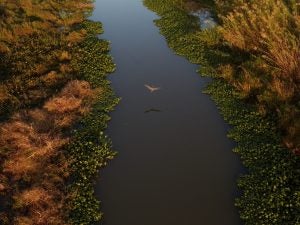
Six reasons why wetlands are vital every month of the year.
The Environmental Protection Agency has designated May as American Wetlands Month, a “time to celebrate the vital importance of wetlands to our Nation’s ecological, economic, and social health.”
Scientists and coastal planners increasingly recognize the important role wetlands play in everything from flood protection to water quality to wildlife habitat to economic impact. At the same time, climate change and other stressors threaten wetlands, and in turn, the people and wildlife that rely on them.
As we close out American Wetlands Month, here are six reasons why one of nature’s richest ecosystems provide value to our lives every month of the year.
1. A vital natural buffer from flooding.
A wetland is a landscape that is covered by or saturated with water, containing plants that thrive in wet soil and low soil oxygen levels. This feature enables wetlands to act as a natural sponge, trapping and slowly releasing surface water. Whether the water comes from rain, snowmelt, or flooding, wetland vegetation slows down the rate at which the water spreads over the floodplain. This water storage drastically reduces the severity of downstream flooding and erosion.
As climate change causes storms to intensify and sea levels to rise, wetlands provide coastal communities with a vital layer of protection. Protecting both people and infrastructure, wetlands save coastal communities $23 billion each year in flood damages.
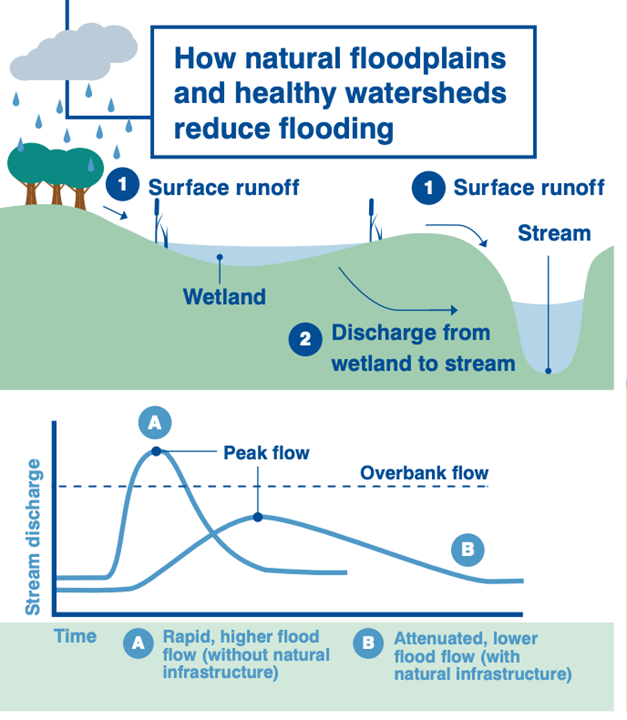
2. A bountiful home for diverse flora and fauna.
Wetlands are one of the most productive ecosystems in the world! Their unique geography of shallow water and high levels of nutrients creates the perfect habitat for a variety of plants, animals and insects. In fact, most commercial and game fish breed and raise their young in coastal marshes. Many species of mammals and birds also rely on wetlands for water, food and shelter. This is why around one-third of all threatened or endangered plants and animals in the U.S. depend on wetlands.
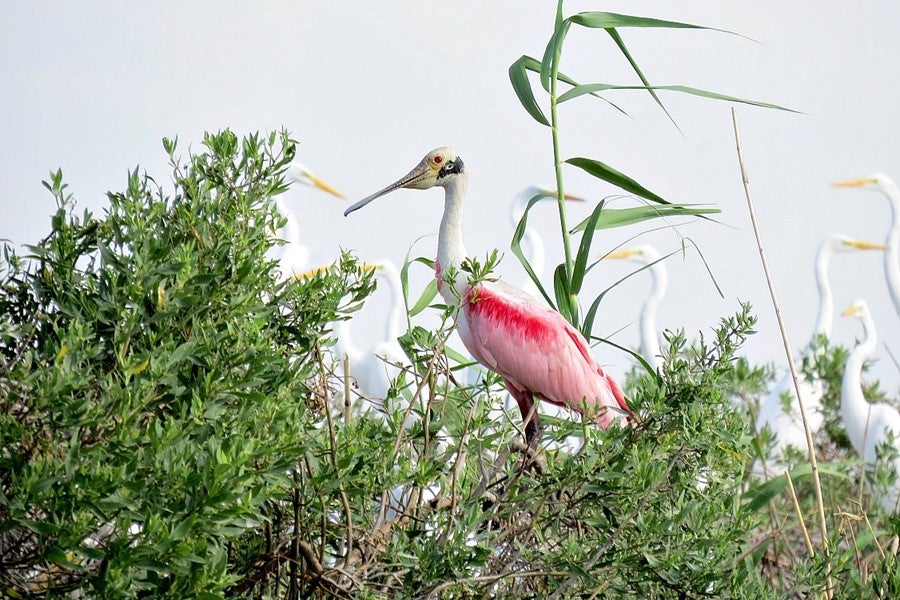
3. An economic driver for states and local communities.
Due to their complex ecosystem and unique flora and fauna, wetlands provide countless ecosystem services including access to many recreational activities. More than one third of all U.S. adults hunt, fish, birdwatch, or photograph wildlife in wetland habitats. The allure of this beautiful ecosystem creates thriving tourism industries for local communities, supporting job growth and local economies.
Wetlands also support the recreational fishing industry, as they provide spawning grounds and nurseries for young fish. The health of coastal wetlands is essential for healthy estuaries, which produce roughly half of all commercially harvested seafood in the U.S.
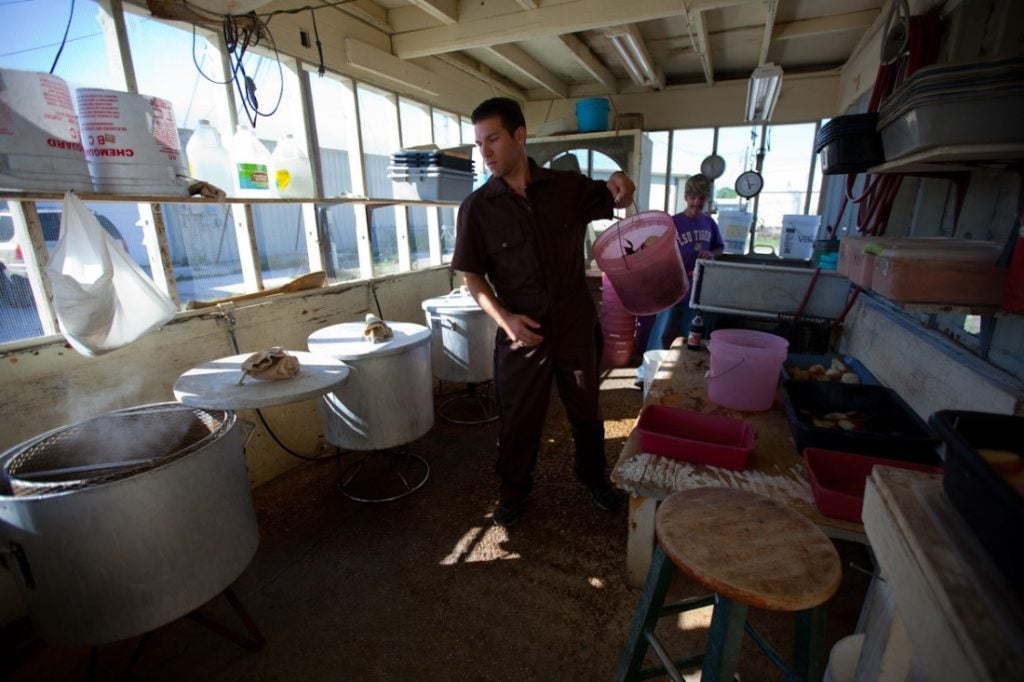
4. A sanctuary for connecting people with nature.
Though wetlands only make up 5% of the land surface in the continental U.S., they are home to 31% of plant species. Additionally, up to half of all North American bird species nest or feed in wetland habitats. Whether it’s sightseeing, boating or hiking, these beautifully diverse ecosystems offer people the opportunity to get outside and connect with the natural world. Additionally, these ecologically rich landscapes allow for immersive environmental education opportunities and awareness programs. In fact, outdoor recreation and eco-tourism earn the U.S. nearly $1 trillion in annual consumer spending and create 7.6 million American jobs.
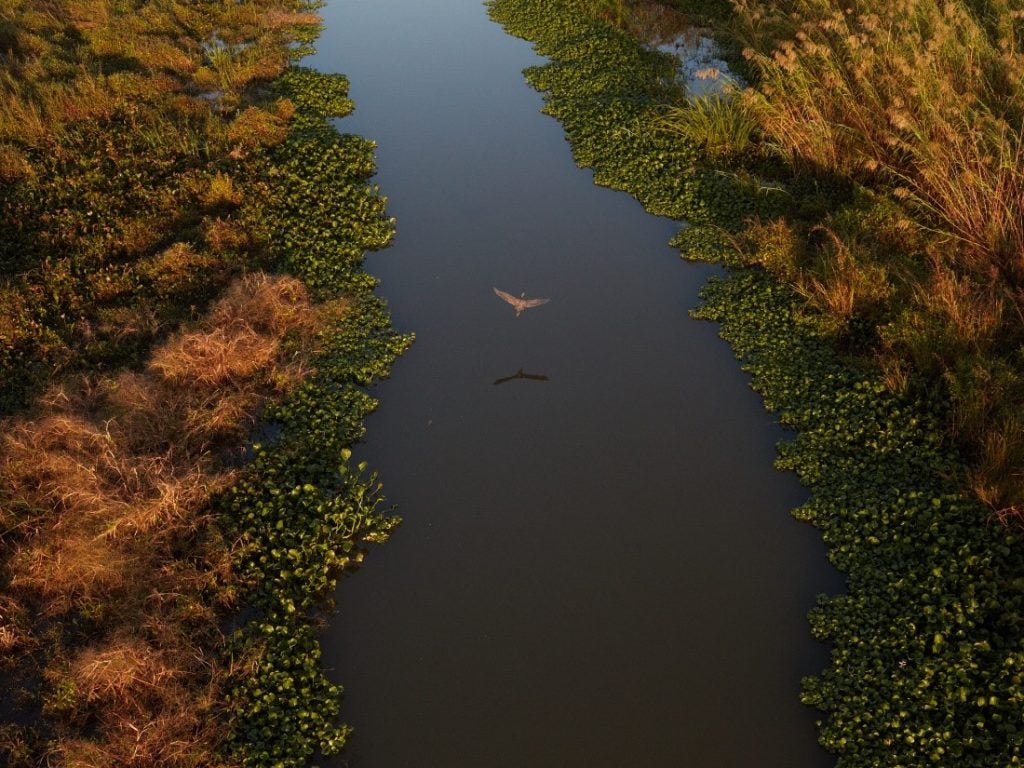
5. A natural filter to improve water quality.
Pollutants from agricultural fields, leaking septic tanks and sewage can often find their way into water streams. Wetlands can absorb these dissolved pollutants through plant roots and microorganisms in the soil. This process filters water and reduces pollutants downstream protecting communities and ecosystems from harmful substances.
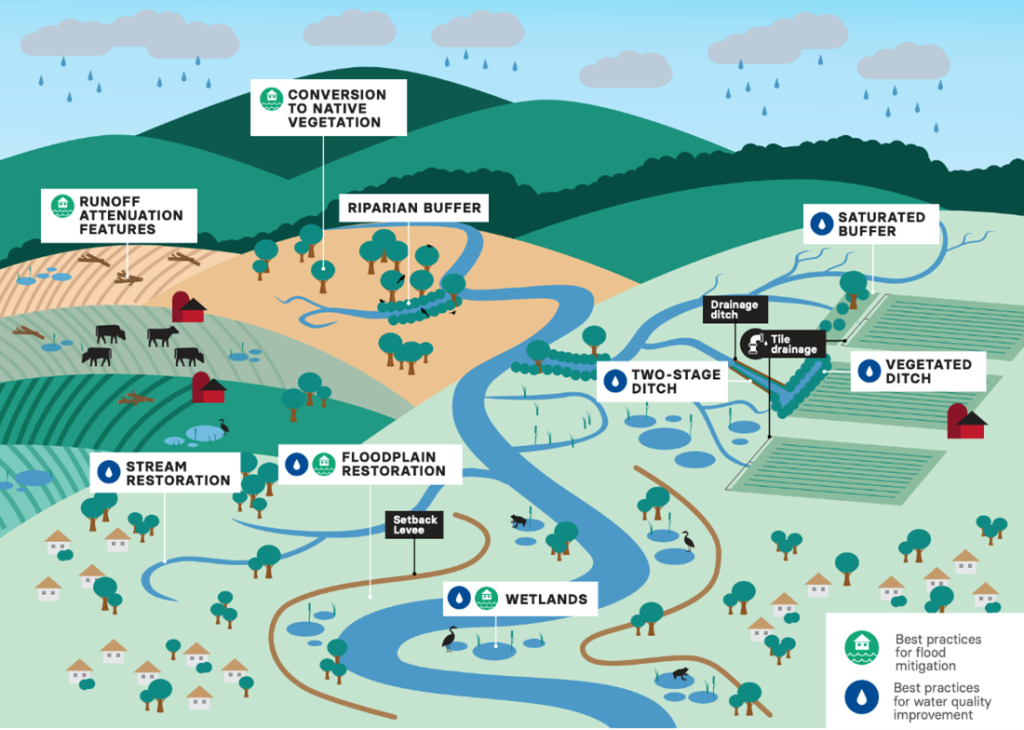
6. A natural solution to address climate change.
Different wetlands, such as marshes and mangrove forests, can actively combat climate change. During a process called carbon sequestration, wetlands can remove harmful greenhouse gases, like carbon dioxide, from the atmosphere and store them within plants and soils. The carbon stored in these habitats is known as blue carbon. Wetlands can be a powerful tool for climate mitigation, as an estimated 13.5 billion metric tons of carbon is currently stored in terrestrial wetlands in the continental U.S.










